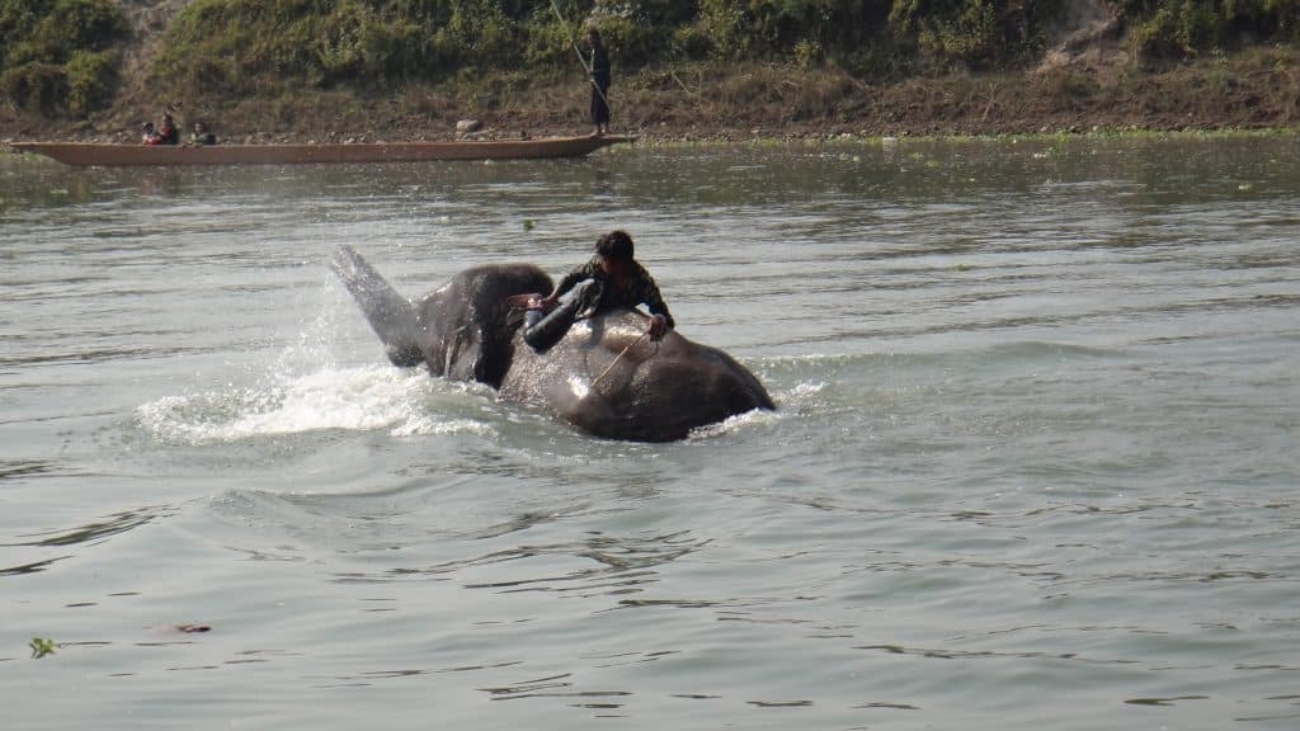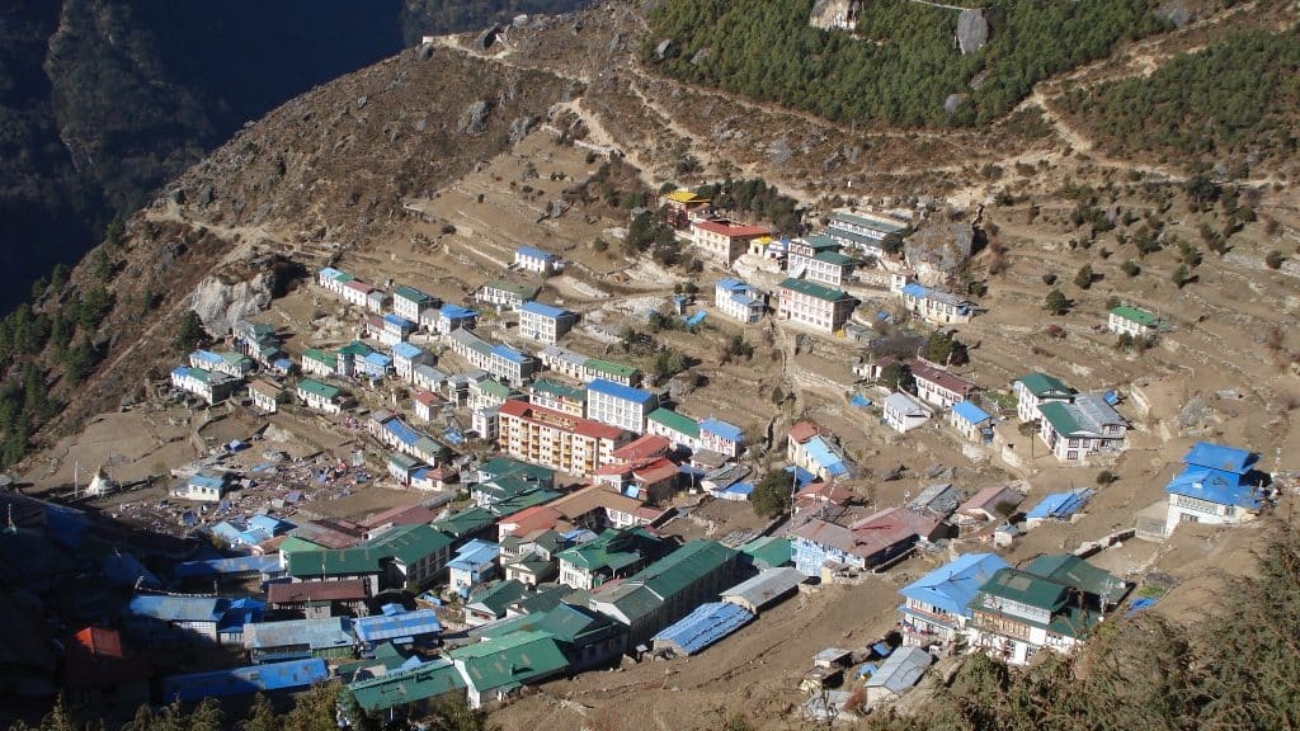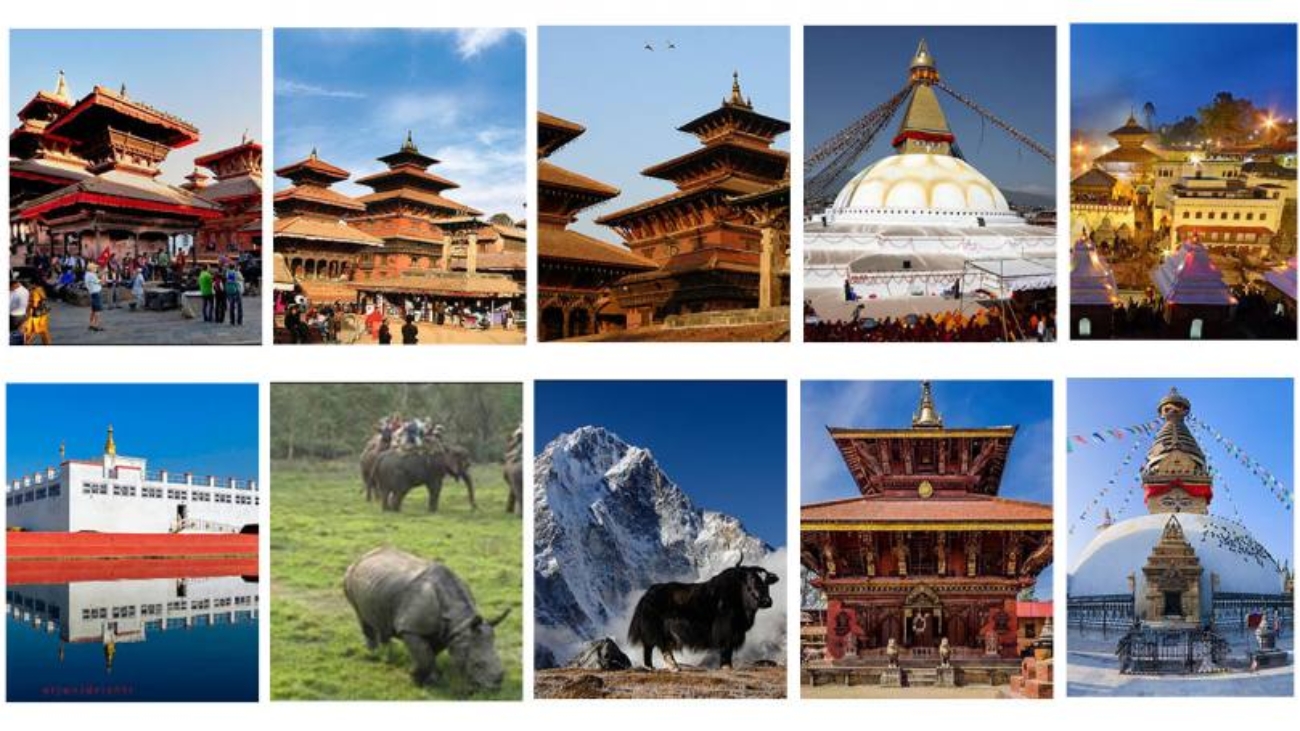Chitwan Jungle Safari offers wide variety of wildlife experience along with beauty of Jungle, which has been attracting travelers to Nepal for over decades. The unity in diversity intimacy between animals and plants is what Chitwan Jungle Safari provides to the travelers. Chitwan Jungle Safari Tour offers you a visit to the Chitwan National Park which is the oldest national park of Nepal and a UNESCO World Heritage site. The adventures jeep safari, elephant ride is one of the best
Chitwan National Park
Chitwan National Park was established in 1973 AD covering an area of 932 sq. km of subtropical valleys and dense forest. Favored by climate and terrain, Chitwan is located in the Terai with tropical climate. Situated 145 km away from the capital city of Kathmandu, Chitwan is one of the most famous destinations of South Asia. Blessed with a diverse and exotic flora and fauna, having a subtropical climate with hot, humid summers and mild winters, it receives tourists throughout the year. With the first conservation area of Nepal, Chitwan National Park, it is proving to be one of the most conserved areas in Asia with thriving wildlife in their intact habitats.
How to reach Chitwan National Park
The main gateway to Chitwan National Park is Sauraha. Sauraha is the small town located at Southern Part of Chitwan. It takes 25min drive on taxi to reach Sauraha from Bhartpur Airport. The easiest way to get to Chitwan is through flight from Kathmandu to Bharatpur. The city of Bharatpur is the air hub for the Chitwan National Park, about 10 miles (16 kilometers) from Sauraha, or 30 miles (48 kilometers) from Barauli. There are several daily flights between Kathmandu and Bharatpur, which take only 20 minutes once you’re in the air. It’s not an especially scenic flight as you’re going away from the mountains. Flying is by far the easiest and quickest way of getting between Kathmandu and Chitwan. Once you land on Bharatpur Airport a private taxi takes you to your hotel at Sauraha.
Another ways to reach to Chitwan National Park is to take Tourist Bus or Jeep from Kathmandu and Pokhara. It takes around 6 hours to reach Chitwan from Kathmandu and 4 hours from Pokhara. It is a scenic trip though, following the Trisuli Valley much of the way from Kathmandu and Marsgyandi river from Pokhara, with its steep forest-covered hills and farming villages. The road turns south at Mugling and heads towards the Terai. Once you reach on Bharatpur it takes 25 minutes to get to your hotel at Sauraha.
If you want to visit Chitwan National Park after your trek on western Nepal then you should definitely take roadway to reach Chitwan National Park from Pokhara. But if you trek on Eastern Nepal then it’s better to take flight from Kathmandu to Chitwan. It’s up to traveler to visit Chitwan National Park before or after trekking, we would recommend to visit Chitwan National Park after you finished your trekking.
Best Attraction on Chitwan National Park
Chitwan Jungle Safari Tour offers you a visit to the Chitwan National Park which is the oldest national park of Nepal and a UNESCO World Heritage site. Blessed with a diverse and exotic flora and fauna, Chitwan is also home to the one-horned rhinoceros, Royal Bengal Tiger, Spotted Leopard, Wild Elephant, Gharial Crocodiles, Blue bull and other wild animals with more than 650 bird species. Arranged in natural wonders of wildlife, Chitwan National Park offers tourists to indulge in the wild atmosphere of the jungle. You can even flock around with the great views of the sunset, exploring the Tharu museum, culture and traditions of the Tharu community, cultural programs and typical Tharu village.
One-horned rhinoceros
One horned rhinoceros are the main attraction of Chitwan National Park, as Chitwan National Park is the home of one horned rhino that is only found in Indian sub-continent. Every year many travelers from around the world comes to visit Chitwan National Park just to watch one horned rhino. To watch one horned rhino you can take jeep safari, elephant ride or you can take walk into the Chitwan Jungle Safari.
Royal Bengal Tiger
Royal Bengal Tiger are one of the endangered mammal that are found and preserved on Indian sub-continent. It’s very rare that you can spot Tiger on your Jungle Safari, if you get spotted one you are lucky. Large number of travelers and photographers visits Chitwan National Park just to see and click tiger. Chitwan National Park is also famous for research work on animals and plants found on Indian sub-continent.
Bird Species
Nepal is a home of more than 650 species birds on earth. Among those many species almost every birds except those only found in cold region are found on Chitwan National Park. The view of birds on the bank of Rapti River and during sunset is one of the most beautiful scenery that you can get on Chitwan Jungle Safari.
Wild Animals
The Chitwan Jungle Safari offers you to witness various wildlife groups within short time period. There are more than 55 mammals and more than 45 species of reptiles and amphibians. Blessed with a diverse and exotic flora and fauna, you can spot many wild animals and reptiles such as one-horned rhinoceros, Royal Bengal Tiger, Spotted Leopard, Wild Elephant, Gharial Crocodiles, Python, cobra Blue bull and other wild animals with more than 650 bird species
Tharu Cultural Museum
Tharu cultural museum provides you information about Tharu’s community. The museum helps you to learn about Tharu’s history and their culture. There you can see paintings, photos, tools and technologies that Tharu community used on their old days as well as in existing’s day. The best attraction of Tharu cultural museum is the portrait art of Tharu community.
Sunset at Rapti River
The spring and autumn season at Chitwan National Park brings beautiful Scenery of Sky, river and flowers. Sunset over Rapti River offers you with beautiful twilight sky, the color landscape of sky and reflection on river is so stunning that makes your trip to Chitwan National Park worth it.
Best Things to do in Chitwan National Park
Jungle Jeep Safari
Jungle Jeep Safari is one of the best things to do in Chitwan Jungle Safari. You can enjoy jungle safari in Chitwan National Park by hoodless jeeps. Through hoodless jeeps, you can watch wild animals and plants into their natural habitats. The drive takes you to dense forest, rivers and breeding center of Gharial Crocodile which is only found on Indian subcontinent. Likewise you can also breeding activities of Marsh Magar crocodile and tortoise too.
Elephant Safari
Elephant is yet another best things to do in Chitwan National Park. You can choose alternatives like jeep safari, walk safari, camel safari or elephant safari for Chitwan Jungle Safari. The best thing about elephant safari is that you can wash elephant and take bath and swim along with elephant.
Canoeing
Canoe ride on shores of river of plain treai offers you clear view on aquatic plants and animals. Canoe rides offers you clear amazing view on the banks of river full with crocodile and birds. The boatman may also sing and entertain you with their cultural song on canoe ride.
Explore Tharu Culture
At Chitwan National Park you can explore the Tharu’s village and Tharu’s culture at Sauraha. Participating on cultural performance by Tharu’s is yet another best thing to do in Chitwan National Park. A colorful unique dress, customs and paintings of Tharu community doesn’t fails to surprise and captivate you.
Safari Walk
Another best things to do at Chitwan jungle safari is to take safari walk instead of jeep and elephant safari. The advantage of taking safari walk is that you can get stunning views of wild animals, birds and best for wild photography. If you enjoy wild photography then taking safari walk is the best alternative in Chitwan jungle safari.
Best season to Travel Chitwan National Park
October to early March is the best time to visit Chitwan for pleasant 25°C temperatures, but if you can stand the heat, come in April and May, the end of the dry season when wildlife gathers at waterholes – expect meltingly hot temperatures in the mid 40°Cs.





